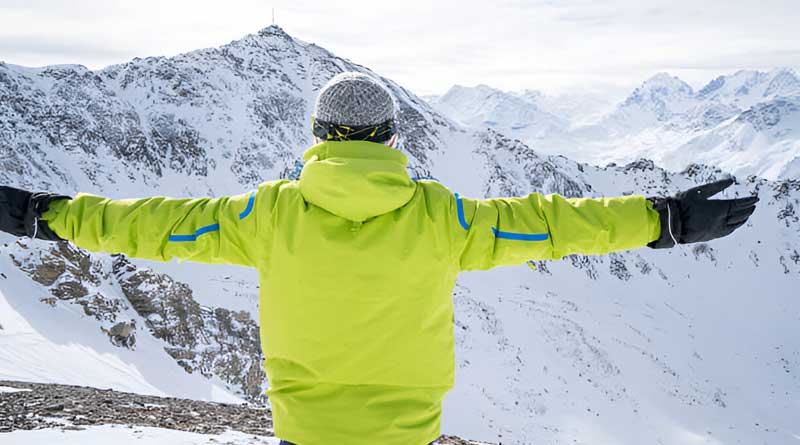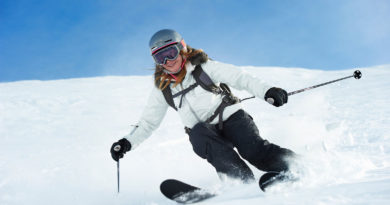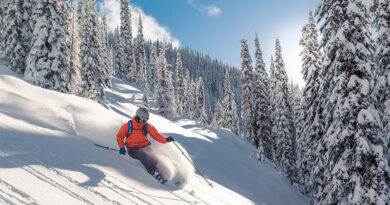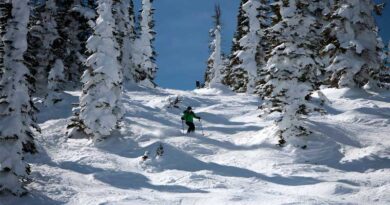What is Big Mountain Skiing?
Big mountain skiing, also known as freeride skiing, is a high-adrenaline form of skiing that takes place on ungroomed, natural terrain typically found on the steep and remote slopes of large mountains. Unlike traditional alpine skiing, which usually happens on groomed trails within ski resorts, it challenges skiers with unpredictable conditions, variable snow, and rugged terrain. It’s an extreme sport that combines technical skill, physical fitness, and an adventurous spirit.
The Essence of Big Mountain Skiing
At its core, big mountain skiing is about exploring the wilderness and pushing one’s limits in a natural alpine environment. Skiers often hike, use helicopters (heli-skiing), or snowcats to access the terrain—areas that are far from ski lifts and marked trails. These mountains are steep, dangerous, and frequently avalanche-prone, requiring not only skiing expertise but also strong mountaineering and survival skills.
The term “big mountain” doesn’t just refer to the size of the peak; it implies expansive, steep, and challenging terrain with natural features such as cliffs, chutes, couloirs, and cornices. The skier must navigate these obstacles while choosing a line—a path down the mountain—that balances technical difficulty, safety, and flow.
History and Evolution
Big mountain skiing has its roots in alpine mountaineering. In the early 20th century, adventurous skiers in the Alps began descending backcountry slopes on rudimentary skis. By the 1980s and 1990s, as ski equipment improved and backcountry access became more feasible, a subculture of extreme skiers began to develop. The sport gained global visibility with ski films and events like the Freeride World Tour, which showcase elite skiers tackling some of the most dangerous and visually stunning lines around the world.
With advances in ski design, avalanche safety gear, and terrain access (such as heli-skiing and ski touring), it has evolved from a niche pursuit into a widely respected discipline within the broader skiing community.
Gear and Equipment
Big mountain skiing demands specialized gear that’s durable, responsive, and suitable for varied conditions.
-
Skis: Big mountain skis are generally wider than traditional skis to provide better floatation in powder snow. They also feature a stiffer construction for stability at high speeds.
-
Bindings: Strong, often reinforced to handle the impacts of cliff drops and rough landings.
-
Boots: High-performance boots with stiff flex and walk modes for hiking or ski touring.
-
Avalanche Safety Gear: Essential equipment includes a beacon (transceiver), probe, and shovel. Many skiers also carry an avalanche airbag backpack, which can increase chances of survival in an avalanche.
-
Clothing: Layered, breathable, and weatherproof. Outer shells are typically made from Gore-Tex or other waterproof fabrics.
Risk and Safety
Big mountain skiing comes with significant risks. Avalanches are perhaps the most serious danger, and every big mountain skier must be trained in avalanche awareness and rescue techniques. Other risks include rockfall, crevasses, getting lost, or sustaining injuries far from help.
Safety requires thorough planning, including checking avalanche forecasts, assessing terrain, and understanding weather patterns. Skiers often travel in groups and carry radios, GPS devices, and first-aid kits. Even experienced skiers work with guides or partners to reduce risk.
Skiers must also have excellent judgment—knowing when to push limits and when to turn back. The mountain is ultimately in charge, and even the most skilled athletes respect its power.
The Skills Required
Big mountain skiing isn’t just about fearlessness; it demands a high level of technical ability and decision-making. A skier needs to be proficient in:
-
Steep skiing techniques: Controlling speed and making tight turns on very steep slopes.
-
Jumping and landing: Handling natural features like cliffs or drops.
-
Snow reading: Interpreting snow conditions to avoid hazards like ice patches or unstable snowpacks.
-
Route finding: Choosing the safest and most efficient line down the mountain.
Training often involves both physical conditioning and mental preparation. Cardiovascular fitness, leg strength, and core stability are crucial for handling the demands of steep descents. Skiers also train their minds to remain calm under pressure and to make quick, informed decisions.
The Freeride Community
Big mountain skiing has cultivated a passionate global community of athletes, guides, filmmakers, and enthusiasts. Events like the Freeride World Tour have elevated the sport, attracting sponsorships and media attention while pushing the boundaries of what’s possible on skis. These competitions are judged not just on speed but on line choice, control, fluidity, jumps, and overall impression.
There is also a growing movement toward sustainability and environmental awareness within the freeride world. As the impacts of climate change become more apparent in alpine regions, many skiers are advocating for conservation efforts and responsible backcountry use.
Popular Big Mountain Destinations
Some of the world’s most iconic destinations include:
-
Chamonix, France: Known as the birthplace of extreme skiing, with access to massive vertical terrain and glaciated routes.
-
Alaska, USA: Home to the steep spines and deep powder of the Chugach and Tordrillo Mountains, often accessed by helicopter.
-
La Grave, France: A lift-accessed yet wild terrain, with no marked trails or ski patrol.
-
Revelstoke, Canada: Offers expansive backcountry and deep powder, ideal for experienced freeriders.
-
Verbier, Switzerland: A host venue for the Freeride World Tour with technical lines and steep descents.
The Appeal of Big Mountain Skiing
What draws people to big mountain skiing is not just the thrill, but the connection to nature and the satisfaction of exploring challenging terrain. There is a purity to freeride skiing—no race gates, no trails, just you and the mountain. Each descent is unique, shaped by the snow, the weather, and the skier’s choices.
For many, it’s not about conquering the mountain, but about understanding it, flowing with it, and experiencing freedom in its rawest form. It’s a way to find adventure, solitude, and inspiration in one of the planet’s most awe-inspiring environments.
Conclusion
Big mountain skiing is an exhilarating, demanding, and deeply rewarding form of alpine adventure. It combines athleticism, courage, and respect for nature, drawing skiers into the vast, untamed beauty of the high mountains. While it’s not for everyone, those who embrace it often find it to be one of the most profound and transformative skiing experiences available. Whether you’re watching a freeride competition or preparing for your own backcountry line, it stands as a powerful testament to human capability and the majesty of the natural world.




